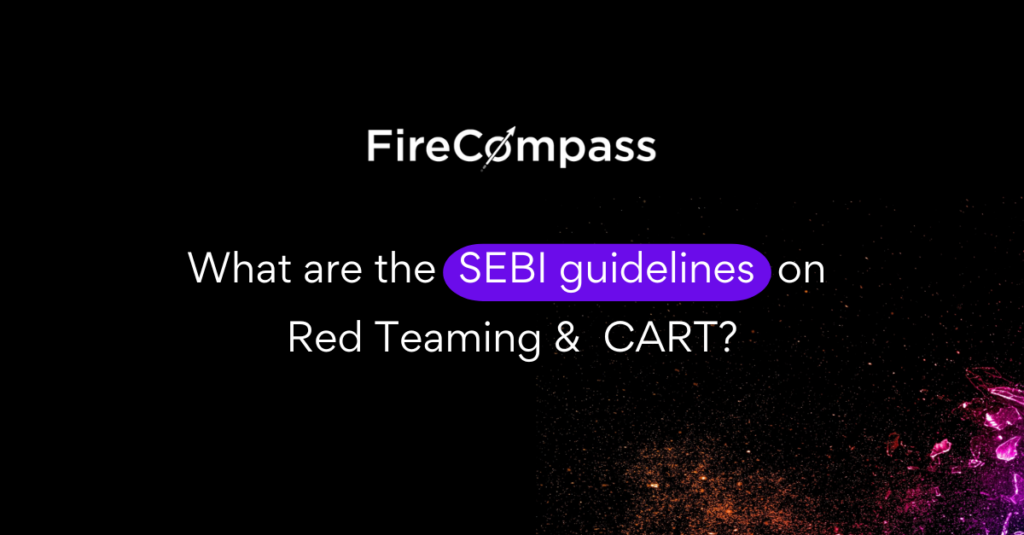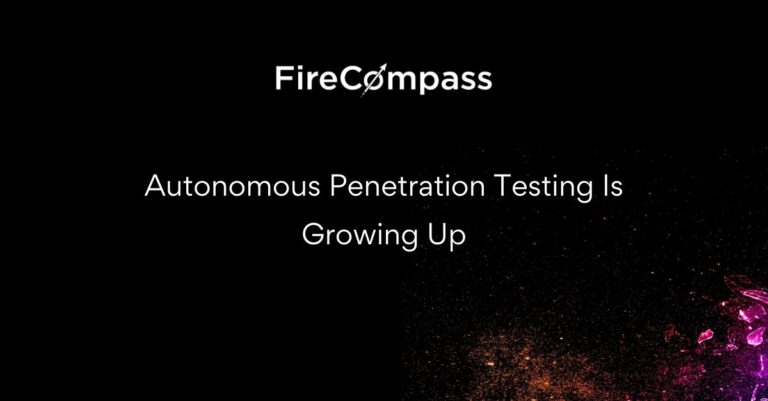Table of Contents
- Overview of SEBI Guidelines on Red Teaming
- Definition of Red Teaming Exercises
- Reporting Cybersecurity Incidents
- Incident Response Management Plan
- Cyber Crisis Management Plan (CCMP)
- Role of Security Operations Centers (SOCs)
- Compliance Timeline for Regulated Entities
- Preparing for SEBI Compliance
- Conclusion
Overview of SEBI Guidelines on Red Teaming
The Securities and Exchange Board of India (SEBI) has established comprehensive guidelines for regulated entities (REs) to enhance their cybersecurity posture. Central to these guidelines is the requirement for Market Infrastructure Institutions (MIIs) and Qualified REs to conduct red teaming exercises. These exercises simulate real-world cyberattack scenarios to evaluate the effectiveness of an organization’s security measures and identify vulnerabilities before they can be exploited by malicious actors.
By mandating red teaming, SEBI aims to align India’s securities market with global cybersecurity standards, ensuring that entities can withstand and respond to cyber threats. The guidelines emphasize the importance of continuous improvement in cybersecurity practices, fostering a culture of proactive risk management. This initiative not only strengthens individual organizations but also enhances the overall resilience of the financial ecosystem. As part of the Cybersecurity and Cyber Resilience Framework (CSCRF), these guidelines reflect SEBI’s commitment to safeguarding investor interests and maintaining market integrity in an increasingly digital landscape.
For organizations looking to enhance their red teaming capabilities, platforms like Continuous Automated Red Teaming (CART) | FireCompass can provide valuable tools and resources.
Definition of Red Teaming Exercises
SEBI defines red teaming exercises as simulated adversarial attempts to compromise organizational missions or business processes. These exercises reflect real-world conditions, providing a comprehensive assessment of an organization’s security capabilities and its systems. The goal is to identify vulnerabilities and weaknesses that could be exploited by actual cyber attackers.
In practice, these exercises involve a team of cybersecurity experts who act as potential attackers, employing various tactics, techniques, and procedures to test the defenses of the organization. This includes attempting to breach security measures, access sensitive data, and disrupt operations, all while adhering to ethical guidelines.
The insights gained from red teaming exercises are invaluable, as they help organizations understand their security posture, improve incident response strategies, and enhance overall cybersecurity resilience. By integrating red teaming into their cybersecurity frameworks, MIIs and Qualified REs can better prepare for potential threats, ensuring a robust defense against cyber risks. For a comprehensive approach to red teaming, organizations may consider leveraging the offerings from FireCompass, which specializes in continuous automated red teaming, penetration testing, and attack surface management.
Reporting Cybersecurity Incidents
Under SEBI guidelines, all regulated entities (REs) are required to report cybersecurity incidents promptly through the SEBI incident reporting portal. Timely reporting is crucial for effective incident management and response. This requirement ensures that any breach or compromise is documented and addressed swiftly, minimizing potential damage.
Each RE must establish a comprehensive Incident Response Management plan that includes Standard Operating Procedures (SOPs) for incident detection, reporting, and resolution. This plan should outline the roles and responsibilities of team members during an incident, ensuring a coordinated response.
Moreover, the guidelines emphasize the importance of Continuous Automated Red Teaming (CART) and timely detection of anomalies. To streamline red teaming exercises, organizations can leverage FireCompass, a pioneer in “Continuous Automated Red Teaming”—a term FireCompass introduced that has since been recognized by Gartner. FireCompass’s recognition in 30+ Analyst reports, 4 Gartner Hype Cycles, including the Gartner’s Hype Cycle for 2024 further solidifies its role as a leading innovator in Automated Red Teaming.
By implementing continuous automated red teaming, organizations can identify potential threats early and take appropriate action. This proactive approach not only helps in mitigating risks but also enhances the overall cybersecurity posture of the organization.
In summary, effective incident reporting and management are essential components of SEBI’s cybersecurity framework, fostering a culture of accountability and responsiveness among regulated entities.
Incident Response Management Plan
SEBI mandates that all regulated entities (REs) establish a comprehensive Incident Response Management Plan (IRMP). This plan must include detailed Standard Operating Procedures (SOPs) to guide the organization in effectively responding to cybersecurity incidents. The IRMP should outline the roles and responsibilities of team members, ensuring that everyone knows their tasks during an incident.
Key components of the IRMP include:
- Detection and Reporting: Procedures for identifying and reporting incidents promptly.
- Assessment and Classification: Guidelines for assessing the severity of incidents and classifying them accordingly.
- Containment and Eradication: Steps to contain the incident and eliminate the threat from the environment.
- Recovery: Processes for restoring systems and operations to normal after an incident.
- Post-Incident Review: A mechanism for conducting a post-incident analysis to identify lessons learned and improve future responses.
By implementing a robust IRMP, REs can enhance their resilience against cyber threats and ensure a swift, coordinated response to incidents.
Cyber Crisis Management Plan (CCMP)
The Cyber Crisis Management Plan (CCMP) is a critical component of SEBI’s cybersecurity framework. It outlines the procedures and protocols that regulated entities (REs) must follow in the event of a significant cyber incident. The CCMP aims to ensure that organizations can effectively manage and mitigate the impact of cyber crises, thereby protecting their operations and stakeholders.
Key elements of the CCMP include:
- Crisis Communication: Establishing clear communication channels for internal and external stakeholders during a cyber crisis.
- Roles and Responsibilities: Defining the roles of team members involved in crisis management to ensure a coordinated response.
- Incident Escalation Procedures: Guidelines for escalating incidents based on severity and potential impact.
- Resource Allocation: Identifying necessary resources and personnel to manage the crisis effectively.
- Training and Drills: Regular training sessions and simulation exercises to prepare staff for real-world scenarios.
By maintaining an up-to-date CCMP, REs can enhance their preparedness and resilience against cyber threats.
Role of Security Operations Centers (SOCs)
Security Operations Centers (SOCs) play a vital role in SEBI’s cybersecurity framework by providing continuous monitoring and rapid response to security incidents. SOCs detect, analyze, and respond to cybersecurity threats in real time, ensuring that organizations can promptly address any anomalies or breaches.
Under SEBI guidelines, all regulated entities (REs) are required to implement SOCs tailored to their operational needs. For smaller firms, the Bombay Stock Exchange (BSE) and National Stock Exchange (NSE) are mandated to set up Market SOCs, which will provide shared cybersecurity resources and expertise. This collaborative approach allows smaller entities to benefit from advanced security measures without the financial burden of maintaining their own SOCs.
Moreover, MIIs and Qualified REs must assess the functional efficacy of their SOCs every six months, while other REs should obtain annual assessments from their SOC service providers. This regular evaluation ensures that SOCs remain effective in detecting and responding to evolving cyber threats, thereby enhancing the overall cybersecurity posture of the financial sector.
Compliance Timeline for Regulated Entities
To facilitate a smooth transition to the new cybersecurity standards set by SEBI, a phased implementation timeline has been established for regulated entities (REs). For those entities that already have existing cybersecurity frameworks in place, compliance with the Cybersecurity and Cyber Resilience Framework (CSCRF) is expected by January 1, 2025. This timeline allows organizations to assess their current practices and make necessary adjustments to align with SEBI’s guidelines.
For newly regulated entities, the deadline for compliance is set for April 1, 2025. This staggered approach ensures that all REs, regardless of their size or existing capabilities, have adequate time to implement the required cybersecurity measures effectively.
Organizations should prioritize their compliance efforts by evaluating their current cybersecurity posture, establishing or enhancing Security Operations Centers (SOCs), and incorporating red teaming exercises into their security frameworks. By adhering to this timeline, REs can significantly improve their resilience against cyber threats and align with global cybersecurity standards.
Preparing for SEBI Guidelines on Red Teaming
To align with the new Cybersecurity and Cyber Resilience Framework (CSCRF) requirements set by SEBI, regulated entities (REs) should take proactive steps. First, conduct a comprehensive evaluation of current cybersecurity measures to identify gaps in compliance with the new standards. This gap analysis will help pinpoint areas that require immediate attention.
Next, establish or strengthen your Security Operations Center (SOC). Whether in-house, through a group entity, or via a third-party provider, the SOC is crucial for continuous monitoring and timely detection of security incidents.
Incorporate red teaming exercises into your cybersecurity strategy. These simulated adversarial attempts will help assess and enhance your organization’s defenses against real-world threats. For a more automated approach, consider utilizing the FireCompass Continuous Automated Red Teaming (CART) platform.
Finally, ensure that all cybersecurity incident reporting mechanisms are in place, including a robust Incident Response Management plan and an up-to-date Cyber Crisis Management Plan (CCMP). By taking these steps, REs can effectively prepare for compliance with SEBI guidelines on red teaming and bolster their overall cybersecurity posture.
Conclusion
The SEBI guidelines on red teaming are a critical component of the Cybersecurity and Cyber Resilience Framework (CSCRF) aimed at enhancing the security posture of regulated entities (REs) in India’s securities market. By mandating red teaming exercises, SEBI ensures that MIIs and Qualified REs simulate real-world cyberattacks to evaluate and improve their defenses. This proactive approach not only helps organizations identify vulnerabilities but also fosters a culture of continuous improvement in cybersecurity practices.
Moreover, the emphasis on timely reporting of cybersecurity incidents, coupled with the establishment of comprehensive Incident Response Management plans and Cyber Crisis Management Plans (CCMP), equips organizations to respond effectively to potential threats. The integration of Security Operations Centers (SOCs) further strengthens the monitoring and detection capabilities of REs.
As the digital landscape evolves, adherence to these guidelines will be essential for safeguarding sensitive information and maintaining investor confidence in India’s financial markets. By prioritizing cybersecurity, organizations can navigate the complexities of today’s threat environment more effectively. For more information on enhancing your cybersecurity strategy, visit FireCompass.











